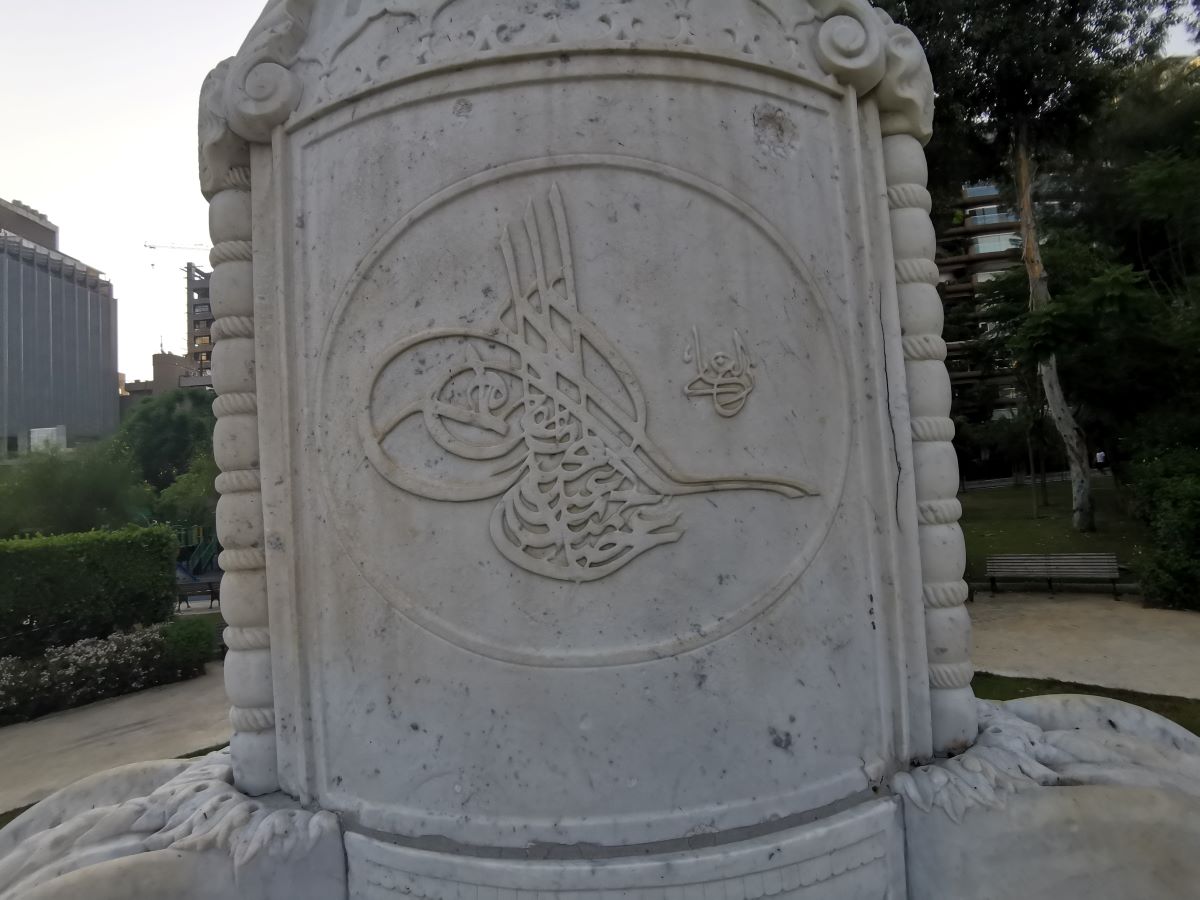Al Hamidiyeh Sebil, located at Al Sanayeh garden, is one of the few remaining Ottoman monuments in Beirut.
Designed by the famous Lebanese architect Youssef Aftimos, the Hamidiyeh sebil was built in the early 1900s under the reign of Sultan Abed El Hamid II who was known for taking huge construction project, notably in Beirut.
A Sebil refers to a public water fountain, usually built at crossroads in order to provide free drinking water in the Ottoman empire. Originally placed at Road El Solh Square, formerly known as Bab Yaacoub or El Hall square, the Sebil was moved to Sanayeh garden in the 1950s to erect at its place the statute of Riad El Soleh, thus the present name of the square.
Like its counterparts, Sarba Sebil , Baabda Sebil and Baakline Sebil, its design reflects to some levels Ottoman Neo Baroque architecture. On one of its façade, one can see the Tughra – a calligraphic signature of an Ottoman sultan.
On another façade, a marble slab holds the following inscription “This sebil was established in the year 318 after the 1000 of the Prophet’s migration, as a memorial and for the glorification of the 25 years since the seating of our master and Mawlana Sultan Ibn Al-Sultan Al-Ghazi Abdul Hamid Khan II on the throne of the Great Islamic Caliphate, and the miracle of the Great Ottoman Sultanate, and as a running charity joining the greatness of goodness and circulating charitable causes”.
Karim Sokhn
Tour Operator & Tour Guide





